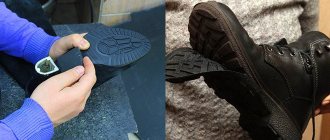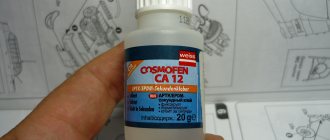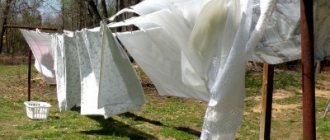The technology for gluing fear onto different bases depends on the type of crystals itself. There are ordinary rhinestones that need to be coated with glue before applying to the surface. There are also hot-melt adhesive elements that already have an adhesive layer on the back side, but the technology for attaching them requires heating. Everything about choosing the best glue and the nuances of working with different types of crystals is below.
Types of rhinestones
According to the type of material, rhinestones are:
- Acrylic. Lightweight, inexpensive plastic decor. They shine poorly and quickly become cloudy after washing and wearing for a long time.
- Metal. Resistant to wear, no shiny shine.
- Glass. The better the quality of the material, the brighter and more brilliant the rhinestones. They don't fade for a long time. They contain lead oxide, so their price is quite high.
Depending on the method of attachment to fabric, rhinestones are:
- Cold fix rhinestones. The user himself applies the adhesive mixture to decor or clothing. For high-quality fixation, it is important to choose the right glue and work with it carefully.
- Hot fix adhesive. These are self-adhesive or hot-melt rhinestones. They need to be applied to the clothing in the desired place and heated, then the adhesive layer will soften, and after hardening it will fix the decoration in the chosen position. Thermal rhinestones are heated with an iron or thermal applicator. In hot-melt rhinestones, the product is applied to the bottom by the manufacturer.
- Sew-on. They have holes for sewing to the material. The process of fixing to the material is more labor-intensive, but there is always the possibility of altering them to another place. Such crystals are used on thin and fleecy materials, where fastening with glue will not be strong.
Preparatory stage
Three factors play an important role in gluing rhinestones - good mood, inspiration and patience. But you also need to prepare thoroughly:
Idea. Think carefully about your future drawing or make a sketch on paper. A life-size sketch can be attached to the surface and adjusted to size.
Life size sketch
Life size sketch
- Choose rhinestones that suit the size, color and style.
- Fabric preparation. Lay out and gently smooth the base fabric. An important point - if the fabric is thin, it is better to place a sheet of paper between the layers of clothing in advance. Otherwise, the adhesive may penetrate too deeply and stick to the clothes.
- Draw onto the fabric with a pencil, tailor's chalk, or a special disappearing marker the outline of the pattern according to which you are going to glue the rhinestones.
- Arrange the rhinestones according to this pattern for visual perception.
You are ready? Let's start work.
Choosing glue for rhinestones
To glue rhinestones to all types of substrates, except glass, universal adhesives based on epoxy resin are used.
They can leave marks and take too long to dry. Better adhesion is ensured by special adhesives, which are produced in sealed containers with a pointed spout. They quickly harden and form an invisible, transparent seam.
When purchasing glue for rhinestones, you need to make sure that its components do not include acetone and ethanoic acid. These components can damage the product. If it will be periodically washed, you need to choose a moisture-resistant adhesive mixture. It is important that after drying the adhesive joint becomes colorless. The product must be packaged in convenient packaging that is free of signs of damage, leaked glue, dirt or dust. The glue must have a normal shelf life.
Moment-Crystal
Has a pungent odor. If used for a long time without protective equipment, your health may worsen. The transparent mixture is easy to apply. Has a slightly viscous consistency. Dries quickly, forming a film on the surface. If used carelessly or if too large a drop of glue is applied, the resulting film may tear, thereby staining adjacent areas that cannot be treated.
Instant adhesion to the surface. It will be impossible to adjust the position of the crystal.
Fevicryl Fabric Glue (India)
Indian glue is packaged in bottles with a dispenser spout. The base is epoxy paste. It does not emit a smell, does not stretch, and is easy to apply. Initially the composition is white, but after hardening it becomes transparent.
The mixture sets quickly, but the position of the glued decor can be adjusted a couple of seconds after application. The created connection does not lose its plasticity after hardening and does not lead to deformation of the material. They are convenient for pasting over vertical bases.
It dries completely within a day. Treatment with a household hairdryer will help speed up drying. After gluing, the item can be washed in cool water no earlier than after 7 days.
Textile adhesive E6000 CRAFT (USA)
The viscous, odorless adhesive composition tends to form threads between the drops. The product has good adhesive properties, forms a strong, elastic seam, and is easily wiped off from surfaces that cannot be bonded. It does not affect foil surfaces, so it is often used for gluing Swarovski stones. The created compound is resistant to fresh and sea water, and is used to fix crystals on swimsuits.
Covered bases can be machine washed.
Danscouture glue (USA)
Non-toxic water-based emulsion. After hardening, it forms a transparent seam that does not deform the material. Suitable for textile materials. Not recommended for use on leather surfaces. Used for gluing crystals to leotards for rhythmic gymnastics and figure skating, and to dancers' costumes. Decor with a flat base is attached to Danscouture.
Epoxy adhesive Swarovski CG 500-35 (USA)
A popular product among jewelers. In everyday life it is used to decorate gadget cases, accessories, furniture, etc.
The mixture adheres well to metal, synthetic materials, rubber, porcelain, wood, and you can even glue stones to glass. It is not applied to fabrics as it leaves marks.
Uhu Power
A universal product with a pungent odor, but it glues crystals reliably. The substance is transparent, has a liquid consistency, and dries quickly. Rhinestones are glued to textiles and leather. The formed compound can withstand high and low temperatures and is resistant to moisture. Products of this brand are used in nail design.
Crystal Hobby
Product without strong odor. The bottle is equipped with a convenient spout. After drying, it securely attaches the rhinestones to the fabric.
Liquid thread
Waterproof composition for gluing crystals. Used when combining materials and for decorating clothes.
General information
Glue for rhinestones
The most reliable way to glue rhinestones is to use specialized glue. This glue ensures reliable adhesion of the rhinestones to the fabric.
Fabric glue - produced in special sealed containers with a pointed top, which allows you to carefully distribute the required amount of glue onto the fabric
Another important advantage is that after complete drying, no traces remain on the fabric; the glue becomes completely transparent.
“Moment Crystal” adhesive with a transparent structure, easy to apply, dries quickly enough, leaves no marks
Important: the glue quickly sets on the fabric, and it is no longer possible to change the position of the rhinestone. In addition, the glue has a specific and unpleasant odor; long-term use can have a negative impact on health.
Fevicryl Fabric Glue bottle has a very convenient applicator spout, making it very easy to apply the right amount of glue. The glue does not stretch, it is white, but after drying it becomes transparent. After applying the rhinestone to the fabric, you have a couple of seconds to adjust its location, since the glue sets quite quickly. The glue dries completely within 24 hours; if you need to speed up this process, we recommend using a hairdryer.
Important: the product can be washed after seven days and only in cold water. "E6000 CRAFT" specialized adhesive for textiles, made in the USA
Odorless, viscous, so threads may form between the drops. But excess glue is very easy to remove from the fabric. Glue is often used to decorate products with Swarovski fabrics.
"E6000 CRAFT" is a specialized textile adhesive made in the USA. Odorless, viscous, so threads may form between the drops. But excess glue is very easy to remove from the fabric. Glue is often used to decorate products with Swarovski fabrics.
The main advantage: the special waterproof formula of the glue allows the product to be used in sea and fresh water, as well as machine washable.
Danscouture water-based rhinestone adhesive, made in the USA. Non-toxic, transparent emulsion, does not cause fabric deformation. Often used to decorate the costumes of gymnasts, figure skaters and dancers with rhinestones.
Important: not suitable for leather products. Types of rhinestones
Types of rhinestones
According to the method of attachment to the material, they are distinguished: adhesive and sewn.
Adhesive. The glue is either on the thermal rhinestone or it needs to be applied to the fabric. Apply cold or hot.
Sew-on. They have a special hole for sewing to fabric.
Hot-melt adhesive, fixed to fabric due to exposure to high temperatures. In order to stick rhinestones, you will need to place them on the fabric and heat them using an iron or a special soldering iron.
Cold fix rhinestones are fixed to the fabric using special glue.
How to glue rhinestones to fabric
- Applying glue. The adhesive drop is squeezed onto the fabric so as to completely penetrate its surface. To do this, after application you need to wait a couple of seconds. For dense materials, the drop should be slightly larger than for thin ones. Its diameter should be slightly larger than the size of the rhinestone. If the pattern is large or the stones are too small, then the mixture is applied to the material, but when the stones are large and spot application is needed, the adhesive mixture drips onto the rhinestone itself.
- Preparation of material. Any elastic materials must be stretched before attaching rhinestones. If you plan to stick rhinestones on clothing, you need to put thick cardboard between its layers to prevent the substance from getting on the bottom of the item.
- Decoration. Rhinestones should be taken not with your hands, but with tweezers, mini-tongs, or a wax or plastic stick with a drop of wax at the tip. Pry off the rhinestone with a toothpick, place it in the center of the glue drop with tweezers and lightly press it into it.
Before decorating clothes, it is better to practice on an unnecessary piece of fabric. If the rhinestones are placed incorrectly, it will be difficult to correct the situation. The glue will leave traces, and the clothes will lose their attractiveness.
It is not recommended to stick elements on thin fabrics such as organza, as well as on leather, including artificial leather. Crystals do not hold well on such materials and will soon fall off.
Features of gluing
Gluing is the easiest and most reliable way to attach jewelry to fabric. If you follow all the steps correctly, the rhinestones will look perfect on things.
- Use only special glue. The required ones are sold in fabric and accessories stores. It can also be purchased at automotive or hardware stores, but this kind of glue - industrial (epoxy) - may leave marks or not set at all.
- Glue for rhinestones is applied in equal small drops in those places where the design should be. Crystals should be taken with tweezers or miniature tongs, or, as a last resort, pry them out with a toothpick. Under no circumstances should you apply them with your fingers: the pad will cover a large area of the fabric, and the pieces of glass may move from the right place. In addition, your finger can stain the fabric with glue, which then cannot be washed off.
- Accuracy. You can lubricate the rhinestone itself with glue, but this task requires dexterity and very great care, since peeling off will lead to disastrous consequences - not only will the crystal be difficult to remove, but an ugly trace of glue will also remain in its place. It is advisable to first practice on a separate piece of fabric to get used to the process, and also watch thematic videos.
Self-adhesive options
They are initially sold with an adhesive composition on the surface, so there is no question of what glue to use to glue the rhinestones with. The gluing process is noticeably simplified: you put rhinestones on the fabric, cover with gauze and iron. Under the influence of heat, the composition dissolves and glues the crystals to the fabric.
Soldering iron applicator. This unit is also sold in specialized stores. It is relatively small and very easy to use. A soldering iron is necessary for heating individual rhinestones with an adhesive base. It performs the same functions as an iron, but is used with each crystal separately. Using a soldering iron applicator, you don’t have to worry about the rhinestones moving or turning over under the gauze.
Thus, choosing glue for glass jewelry will not be a big problem: you can buy it in any store, and even more so in a specialized one. If you need to manually glue rhinestones, you can purchase a soldering iron applicator, which will greatly simplify the task, or small tweezers or tweezers.
The simplest way is to use self-adhesive, or hot-melt, rhinestones - they are produced immediately with an adhesive base, which just needs to be heated to adhere to the fabric.
Remember that when gluing rhinestones, the most important thing is accuracy and attentiveness, so that you do not have to re-glue the stones and not leave glue marks. Then the thing will look neat and beautiful.
Adhering to film-adhesive tape
A convenient method of application for large patterns of stones that are difficult to carry one piece at a time. The gluing process goes like this:
- The stones are placed on adhesive tape with the adhesive base facing up.
- The film is turned over onto clothing and ironed.
- The film is removed.
When attaching crystals in a large group at the same time, you must remember that not all rhinestones can grip equally well and some of them will fall off over time.
Jacket with brake clasp
A beautiful oversized sweater with a complex intertwined pattern is a great option for home, work and walking.
YOU WILL NEED
Yarn (100% wool; 100 m/ 50 g) – 650 (700) 750 g blue; knitting needles No. 5,5 and 6; circular knitting needles No. 5.5; 3 brake fasteners.
PATTERNS AND DIAGRAMS
RUBBER
The number of loops is a multiple of 4 + 2 chrome. Each row begins and ends with chrome. loop. Front rows: * 1 front, 2 purl, 1 front, from * repeat. Purl rows: knit loops according to the pattern.
"BRAID" ON 24 LOOPS
Knit according to the given pattern. Only the front rows are given on it; in the purl rows, knit the loops according to the pattern or as indicated. For the shelves and back, knit: from the 1st to the 32nd r. 2 times, from the 33rd to the 68th r. 1 time, then repeat the 69th and 70th rows. After 68 r. there should be 18 stitches on the knitting needles. For sleeves, repeat from the 1st to the 32nd row.
KNITTING DENSITY
13 p. x 21 r. = 10 x 10 cm, knitted with front and back stitch; 20 p. x 21 r. = 10 x 10 cm, knitted “Oblique” on 24 loops in rows from the 1st to 62nd pattern; 15 p. x 21 r. =10 x 10 cm, knitted “Oblique”, starting from the 69th r. diagrams (= on 18 loops).
PATTERN
PERFORMING THE WORK BACK
On knitting needles No. 6, cast on 98 (104) 110 loops and knit 10 cm with an elastic band, while in the last purl. row add 1 p. = on knitting needles 99 (105) 111 p. Continue work, distributing patterns as follows: edge, 10 (13) 16 p. front stitch, 2 p. purl stitch, 2 p. front satin stitch, 2 p . purl stitch, 24 sts of the Braid pattern, 17 sts of the purl stitch, 24 sts of the Braid pattern, 2 stitches of the purl stitch, 2 stitches of the front satin stitch, 2 stitches of the purl stitch, 10 (13) 16 stitches . front surface, edge. After 43 cm = 90 r. (41 cm = 86 r.) 39 cm = 82 r. from the elastic band, close 1 x 3 stitches on both sides, then in every 2nd row. another 1 x 2 p. and 5 x 1 p. = on the knitting needles 67 (73) 79 p., including decreases inside the patterns - in the “braid” sections. After 22 cm = 46 r. (24 cm = 50 rub.) 26 cm = 54 rub. from the beginning of the armhole, close on both sides for shoulder bevels 1 x 5 (6) 7 p., then in the next 2 p. 1 more time, 5 (6) 7 p. Simultaneously with the beginning of the shoulder bevels, close the middle 33 p. for the neck and finish both sides separately. To round the neck, close along the inner edge in the next 2 r. 1 time 2 p. After 3 cm = 6 p. from the beginning of the shoulder bevels, close the remaining 5 (6) 7 stitches of the shoulder, respectively.
LEFT SHELF
On needles No. 6, cast on 47 (50) 53 sts and knit 10 cm with an elastic band. Continue the work, distributing the patterns in the following sequence: edging, 10 (13) 16 stitches in the front stitch, 2 stitches in the purl stitch, 2 stitches in the front stitch, 2 stitches in the purl stitch, 24 stitches in the Braid pattern, 5 stitches purl stitch, edging. I will make an armhole along the right edge as described for the back = on knitting needles 31 (34) 37 p., including decreases inside the pattern - on the section of the Braid pattern. After 18 cm = 38 r. (20 cm = 42 r.) 22 cm = 46 r. from the beginning of the armhole, close for the neckline along the left edge 1 x 6 p., then in every 2nd r. another 1 x 3 p., 2 x 2 p. and 3 x 1 p. At the same time, make a shoulder bevel along the right edge, as described for the back.
SLEEVES
On knitting needles No. 5.5, cast on 38 (42) 46 stitches for each sleeve and knit 13 cm with an elastic band, while in the last purl row evenly add 8 sts = on knitting needles 46 (50) 54 sts. Continue working with knitting needles No. 6, distributing the patterns in the following sequence: edging, 4 (6) 8 stitches in the front stitch, 2 stitches in the purl stitch, 2 stitches in the front stitch, 2 stitches in the purl stitch, 24 stitches in the Braid pattern, 2 stitches in the purl stitch , 2 stitches in stockinette stitch, 2 stitches in purl stitch, 4 (6) 8 stitches in stockinette stitch, edging. For bevels, add 5 x on both sides in every 8th r. and 2 x in every 6th r. (2 x in every 8th r. and 6 x in every 6th r.) 8 x in every 6th r. and 1 x in the next 4th p. 1 p. each, on the added loops knit with stockinette stitch = on knitting needles 60 (66) 72 p. Through 26.5 cm = 56 r. close from the elastic on both sides to roll 1 x 3 sts, then in every 2nd p. 2 x 2 p. each, 9 x 1 p. each, 2 x 2 p. each and 1 x 3 p. (3 x 2 p. each, 7 x 1 p. each, 3 x 2 p. each and 1 x 3 p.) 4 x 2 p., 5 x 1 p., 4 x 2 p. and 1 x 3 p. After 14.5 cm = 30 r. from the beginning of the formation of the okat, close off the remaining 14 (16) 18 sts in one row.
ASSEMBLY
Make shoulder seams. For the fastener strips, cast on 104 sts on circular knitting needles along the sides of the shelves and knit with an elastic band, while starting and ending with 2 knits. loops. After 5 cm, close the loops. For the binding, cast on 88 stitches on circular needles along the edge of the neckline, including the short sides of the fastener strips, and knit with an elastic band, while starting and ending with 2 knits. loops. After 5 cm, close the loops. Sew on the brake fasteners, as in the photo. Sew on the sleeves. Sew side seams and sleeve seams.
How to glue thermal rhinestones
To reliably glue thermal rhinestones to clothes, you need to check the quality of adhesion of the glue to the surface material. You also need to make sure that the surface will not suffer from exposure to high temperatures. Clothes must be clean, free from stains and wrinkles.
If a complex pattern or rhinestone applique is created, first a diagram is drawn on the material, indicating the attachment points. The markings are placed carefully so that after gluing they are not visible.
Iron gluing
- The rhinestone is placed on the fabric with the adhesive side down in accordance with the selected pattern or design. It is important that the dress, top or any other clothing is ironed.
- A sheet of paper is placed on top of the design, through which the rhinestones are ironed with an iron for 1-2 minutes. If the fabric is too thin, paper is also placed on the wrong side.
- Rhinestones are best glued to fabric with an iron operating in the “Silk” or “Wool” mode. The choice of temperature depends on the material.
- When ironing, apply light pressure to the fabric with the iron.
- Afterwards the paper is removed from the fabric. You can use the item only after the glue has completely cooled.
There is another method of gluing with an iron. The heater is fixed on a stand for ironing sleeves, with the heating surface facing up. While the device is cold, rhinestones are laid out on its sole with the adhesive side up. A gluing pattern is applied on paper. Transparent fabric is placed over the design. The iron heats up to a temperature at which the glue on the rhinestones begins to boil. Each crystal is picked up with a needle and quickly transferred to the fabric with the adhesive side down.
Using the applicator
Not all materials can be covered with thermal rhinestones with an iron. To ensure that rhinestones stay on velvet, leather or suede for a long time, they are attached with an applicator. This is a soldering iron with nozzles of different sizes, using which you can glue large and small parts. The algorithm for using the applicator is as follows:
- The nozzle is selected according to the size of the rhinestone, so that it is completely heated.
- The nozzle is installed, the applicator is plugged in and heated up.
- The material is placed on a flat horizontal plane. The rhinestones are laid out according to a pre-designed pattern.
- Each crystal is warmed up and pressed against the material with a soldering iron for 5-20 s. The larger the crystal, the longer it takes to glue.
There are vacuum applicators that have a pump to draw out and hold the rhinestones.
Gluing methods
How to glue rhinestones on clothes? Depending on the type of rhinestones you use for decoration, the gluing process itself depends.
Basic Considerations
Before considering each option, let’s outline a number of general operating principles:
- The fabric must be clean and ironed.
- It is best to degrease the places where the rhinestones will be attached.
- Rhinestones must be applied to stretched clothing. A hoop is especially useful in this matter, with the help of which the fabric is perfectly fixed and stretched in the required place.
- Determine the location of the decor.
- Mark the design pattern on the clothing. This can be done with a pencil or chalk.
- The work process requires you to be extremely careful and attentive.
So, let's move on to ways to glue rhinestones on clothes.
Decor made of adhesive rhinestones
This type of stone already has an adhesive layer, which greatly simplifies the work. To decorate clothes with thermal rhinestones, you need to arm yourself with an iron, which can glue them to the fabric. Due to the simplicity and convenience of the process, this type of crystal is very popular.
Let's look at how to glue rhinestones onto clothes with an iron, in order:
- Place a sheet of paper or foil under the area of clothing to which you will glue the rhinestones: this will prevent the glue from getting further.
- Set the temperature setting on the iron - the average setting will be enough.
- Place the desired pattern or design on the bottom side of the stones on the clothing, and then cover with a light cloth.
- Apply the iron to it, press and hold for about 2-3 minutes. During this time, the adhesive base will melt and the crystals will stick to the clothing, but large elements will require a little more heat treatment.
Your beauty is ready!
To make the process even easier, manufacturers produce entire applications made from thermal rhinestones. They can be bought in a store, and the ornament can be very diverse in shape, size and type.
How to glue rhinestones onto clothes with an iron in the form of an applique? It's simple:
- We apply the selected decoration to the clothes.
- Place a piece of fabric on top of the applique.
- Heat with an iron for at least 30 seconds.
- We wait until the rhinestones and clothes cool down.
- Remove the film from the application.
Or by the following method: start ironing from the inside out and continue for about five minutes, then turn the clothes inside out and heat for another 30 seconds.
Gluing thermal rhinestones with an applicator
If your clothes are made of leather, velvet or suede, then you cannot use an iron to process thermal rhinestones. To do this, use a special device that resembles a soldering iron. It's called an applicator and it comes with several special attachments for rhinestones of different sizes.
The operating principle of the device is spot heating. How to glue rhinestones on clothes using an applicator?
- Install a nozzle on the device that matches the size of the stones.
- Place the rhinestones according to the pattern of the ornament.
- Apply the applicator to each crystal and hold until the glue sets on the material.
Attach rhinestones with glue
For this method you need special glue for rhinestones. It is not difficult to purchase it - it is sold in various fabric stores. The glue may be whitish in color or completely transparent. Most often, the tube is equipped with a convenient spout for precise application of the substance.
How to glue rhinestones to clothes using glue? The sequence is as follows:
Apply neat drops of glue to the drawing diagram.
A crystal is placed on each drop. It is most convenient to grab crystals with tweezers, and miniature parts with a toothpick
But using a fingertip is not the best option, since most likely it will not be possible to place the crystals strictly in their places. Using the pad of your finger, carefully press down each stone so that the glue should come out slightly. After you have laid out the entire design with rhinestones, leave the clothes so that all the elements dry - preferably for a day.
Gluing with adhesive tape
Another quick and very convenient method is how to glue rhinestones on clothes.
You need to do this:
The pattern is applied to the film, and the crystals are laid along its contour directly on the sticky side of the film.
We cover the back part of the laid out stones with glue and apply it to the clothes. After drying, carefully remove the film, leaving your shiny design on the fabric.
Decoration with Swarovski crystals
They are of high quality. They decorate the interior, items of clothing, shoes, smartphone cases and other accessories. It is better to stick crystals with a flat bottom on hard surfaces. Before work, you need to degrease the base on which the rhinestones will be held, and glue the decorations with a two-component epoxy compound. CG-50-35 will do. When the drop is applied, the crystal is placed on it with light pressure.
Swarovski thermocrystals simply need to be placed on the material and ironed on the reverse side.
Tips for a needlewoman
In the old days they told me to learn to embroider on matting, and then on scoured cloth. A similar recommendation is addressed to novice decorators with rhinestones: by practicing on not the best items in your wardrobe, you can understand the principle of working with decoration and find out which company supplies the best material.
Be sure to take into account the presence of other accessories on clothing : zippers and buttons may interfere with the uniform treatment of the surface with rhinestones by the iron.
Advice! Places with small surfaces that are difficult to reach with an iron can be decorated with a soldering iron, gluing each part separately. Don't know how or are afraid to work with a soldering iron? You can use a candle and tweezers: after heating each rhinestone on the fire, quickly and carefully glue it. The method is also good for fabrics that do not like high temperatures.
Having mastered pasting clothes with thermal rhinestones, you can try decorating shoes - for example, masking scuff marks on your favorite but slightly worn boots. For this:
- A drawing is applied with a gel pen;
- Before gluing the decor, the trace of the handle is carefully wiped off with a cotton swab and alcohol or acetone. Acetone spread over the surface of the skin is fraught with indelible stains !
- Using a soldering iron or a candle, each element of the pattern is glued.
Will the skin suffer from such manipulations? No - a fairly coarse material can survive heating of about 180 degrees. Only the varnished surface raises doubts.
Rhinestones are a means for decorating clothing, interior items, canvas, plastic and other surfaces. In order to make decorative trim with rhinestones, you don’t need any special skills, just take an iron and put in a little effort.
Caring for products with rhinestones and crystals
- Can't be soaked.
- Rhinestones are hand washed in low temperature water (maximum +30 °C).
- You need to wash with the addition of liquid detergents for delicate fabrics.
- Do not use air conditioner or bleach, as the adhesive properties of the adhesive composition deteriorate and the rhinestones fade.
- You cannot wring out the item too much; excess water can only be removed from it through a terry towel.
- Do not allow direct contact of the hot surface of the iron with decorated areas.
- Ironing is done through gauze or thin fabric.
conclusions
Rhinestones are used to decorate clothes, interior items, dishes, and lay out paintings. The method of attaching crystals to decorate the surface must be selected taking into account the material (plastic, ceramics, type of fabric), the area of the surface to be processed, technical capabilities, and the skill of the needlewoman.
For processing clothes, it is recommended to choose a hot-melt adhesive or an adhesive base decoration method. To process more complex surfaces, such as ceramics, solution-mounted crystals can be used. And crystals in baskets are perfect for making beautiful ribbons, chains, necklaces or bracelets.
Rhinestones are one of the most popular types of decor for women's clothing and accessories. They are used by both famous designers and craftswomen who create unique textile products and home decor items with their own hands. You can decorate even the most inconspicuous thing with rhinestones and sequins, and it will find a new life.
These decorative elements are attached to the material in different ways. How to glue crystals to a dress so that they stick well? What glue is suitable for working with fabric? How to care for clothes with rhinestones and sequins?











